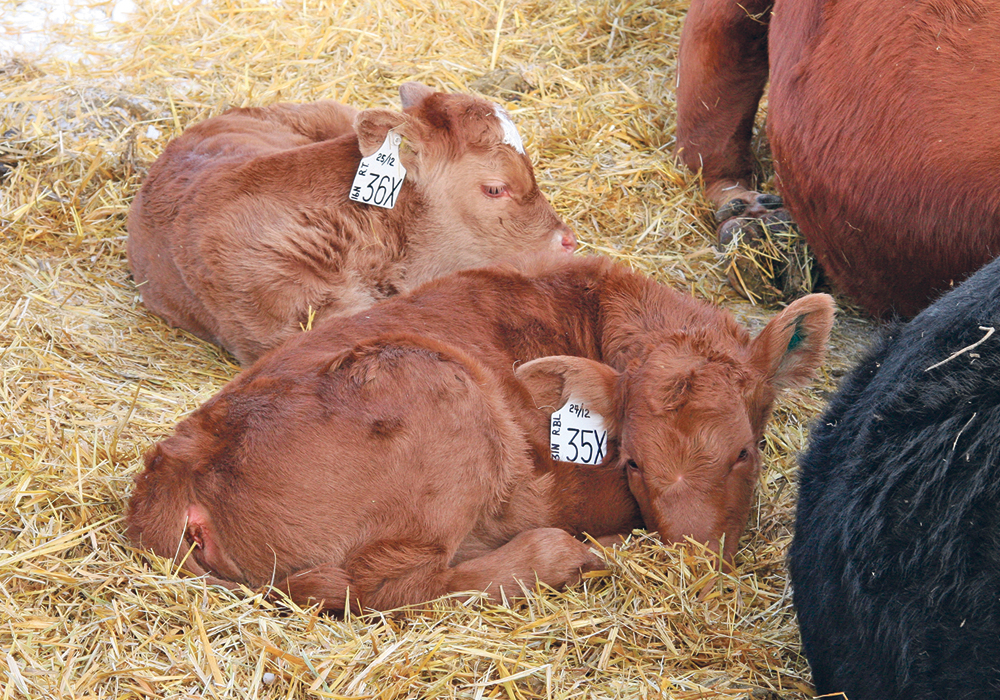Veterinarians, nutritionists and those representing the pharmaceutical industry hear lots of queries and complaints that their ranch-raised calves, though vaccinated, still get sick.
Why is that?
One must really look at the whole process involved in raising a calf — the gathering, processing, weaning, feeding, watering and transportation — and reduce stress as much as possible.
Sickness is generally the result of stressors leading to a weakened immune system. It varies year to year. I always advise clients to watch calves especially up to two weeks post-weaning for any poor-doing, febrile calves that need treatment. While it is important to limit antibiotic use, they are at times still necessary to keep calves healthy.
Read Also

The Western Producer Livestock Report – November 13, 2025
Western Producer Livestock Report for November 13, 2025. See U.S. & Canadian hog prices, Canadian bison & lamb market data and sales insights.
Good calf health also depends on effort and planning prior to weaning. Some herds that don’t often see humans are quieted by simply walking or driving through the herd.
It has been proven that vaccines against respiratory pathogens and other diseases are specific to regions, and calves require protection based on the diseases prevalent in their area. The gold standard is to vaccinate two weeks before weaning, but if the initial vaccine was given sometime before, such as at turnout, the booster shot may be given at weaning.
Make sure to vaccinate properly and maintain refrigeration. All other procedures (branding, castration or dehorning) should be done before weaning as well. It is pretty much standard now to use pain killers (NSAIDS) for all these procedures to reduce pain and stress.
What has proven to be the most stress-free weaning for calves is the two-staged nose flap process. Here, producers combine the processing and inserting the nose flaps in one pass through the chute. The only negative is having to run the calves through the chute again to remove the flaps, which should be done no later than six to seven days later. Otherwise it has been found that ulcers can develop. Flaps can be cleaned and used the following year.
If calves are older, cows do most of the bawling and producers should consider their stress as well. Fence-line weaning can work, but whether it is possible on your farm depends on the integrity of the fence, available space and other factors.
Always evaluate your chute alley system for a better way to manage the process and practise low-stress cattle handling techniques.
The more experienced at handling, the better and smoother the process will go.
Some producers have constructed weaning gates that calves can walk under, making the task of separating cow-calf pairs quick and stress free. Remember, loading and unloading is stressful so an emphasis should be placed on calm handling methods.
Any potential stressors, such as a fly problem in mid-summer or a worm burden during summer or a late-fall lice burden, are also things to consider treating so the calf is not dealing with these extra issues that could affect its immune system.
Feeding and nutrition, including trace minerals, are critical at any time but if calves are coming off pasture, it is ideal if they are used to the pen, feed bunks, bale feeders and waterers with their mothers before weaning.
The next best option is acclimation, in which calves are settled in the pen and shown the watering bowl and feed bunks. If they are used to eating the feed and drinking the water with their mothers, this decreases stress.
One final procedure is a nutritive supplement given before or at weaning to boost nutrition and prevent dehydration and more stress. I am most familiar with a product called De-Stress, a combination of electrolyte, amino acids, vitamins and an energy source. Calves and cows that are given nutrition supplements will do better, shrink less and keep eating. This is especially critical if the animals are being weaned and then shipped a distance.
All these steps should lead to fewer issues at weaning and healthier-looking calves that are more marketable and have more favourable long-term health outcomes.
Roy Lewis works as a veterinarian in Alberta.















